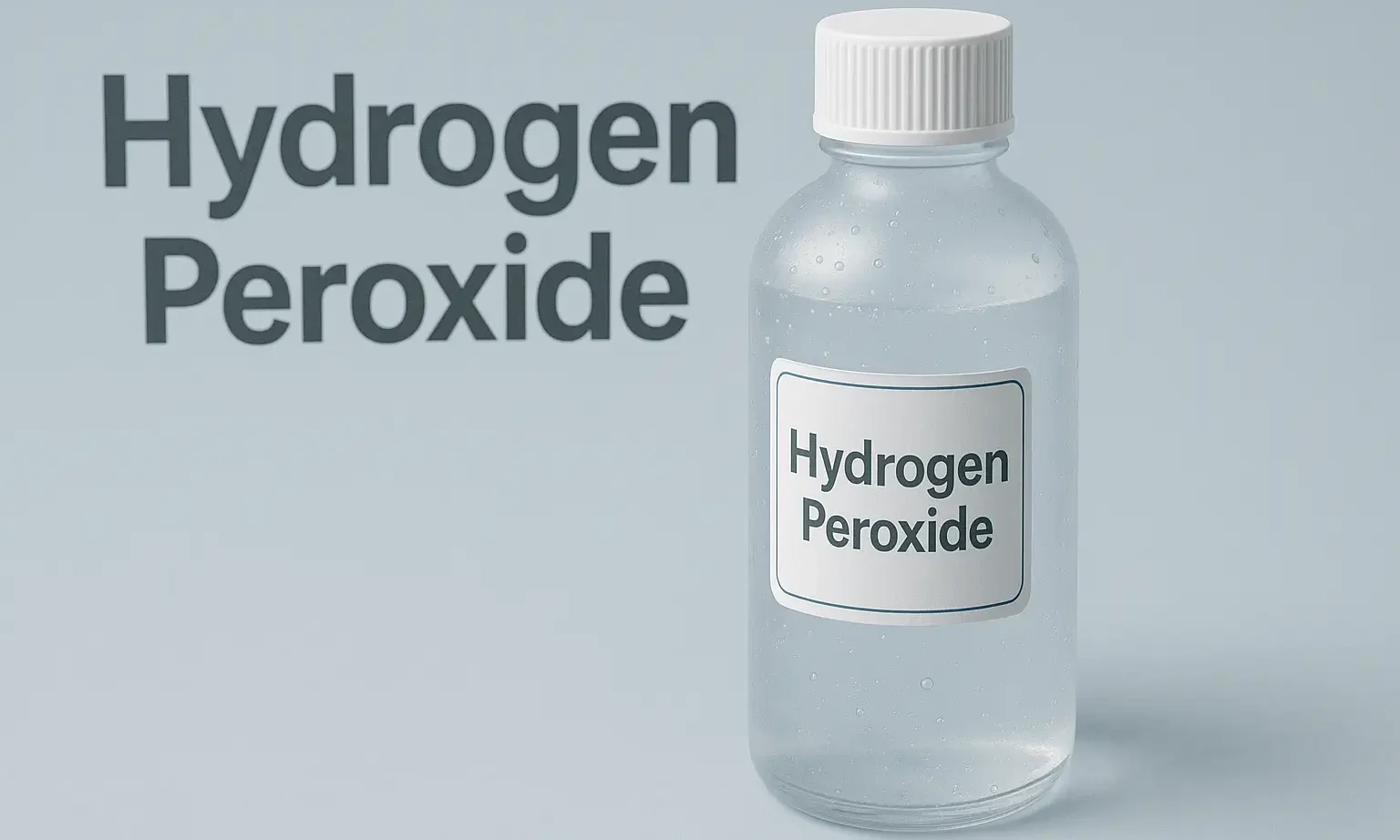Preparation of Hydrogen Peroxide:
- Industrially, It is prepared by the anthraquinone process, where anthraquinone is hydrogenated to form anthrahydroquinone, which reacts with oxygen to produce H2O2:
$\mathrm{C_6H_4(CO)_2(CH_2)_2 + H_2 \rightarrow C_6H_4(COH)_2(CH_2)_2}$
$\mathrm{C_6H_4(COH)_2(CH_2)_2 + O_2 \rightarrow C_6H_4(CO)_2(CH_2)_2 + H_2O_2}$
Properties of Hydrogen Peroxide:
- Colorless liquid with a slightly sharp odor.
- Miscible with water in all proportions.
- Acts as a weak acid and strong oxidizing agent.
- Typically, available as a 3
- Chemical formula: H₂O₂.
This is a sample ad placement!
Uses:
- As an antiseptic for cleaning wounds to prevent infection.
- As an oral rinse for mouth ulcers and gingivitis.
- In higher concentrations, used for sterilizing medical equipment.
- As a bleaching agent in the cosmetic industry.
Storage:
- Store in a cool, dark place, away from light and heat to prevent decomposition.
- Keep in a well-sealed, non-metallic container, typically brown or opaque to protect from light.
This is a sample ad placement!
Assay of Hydrogen Peroxide (H₂O₂)
Purpose:
- To determine the concentration or purity of hydrogen peroxide using permanganate titration.
-
Procedure:
- Prepare a Standard Solution:
- Dissolve a known amount of potassium permanganate (KMnO₄) in water to create a solution of known concentration.
- Prepare the H₂O₂ Sample:
- Dilute an accurate volume of the H₂O₂ sample with water, as concentrated H₂O₂ can be hazardous.
Demo Ad
This is a sample ad placement! - Add Acid:
- Add a known volume of sulfuric acid (H₂SO₄) to the diluted H₂O₂ sample to create an acidic environment for the reaction.
- Titrate:
- Slowly add the KMnO₄ solution to the acidic H₂O₂ solution while stirring.
- The reaction between H₂O₂ and KMnO₄ occurs as follows:
- The endpoint is reached when the pink color of KMnO₄ persists, indicating that all the H₂O₂ has reacted.
- Calculate the Concentration:
- Measure the volume of KMnO₄ solution used in the titration.
- Use the stoichiometry of the reaction to calculate the concentration or purity of the H₂O₂ sample.
Demo Ad
This is a sample ad placement!
- Prepare a Standard Solution:
Thank you for reading from Firsthope's notes, don't forget to check YouTube videos!
This is a sample ad placement!

